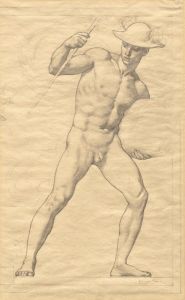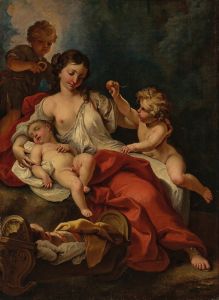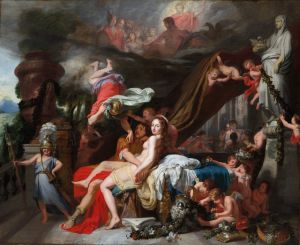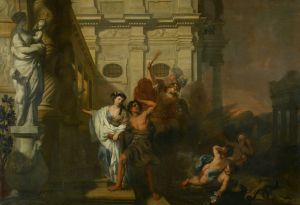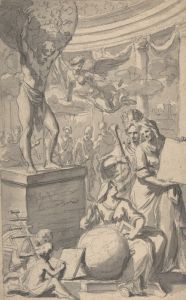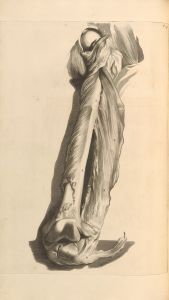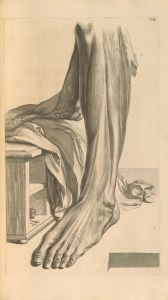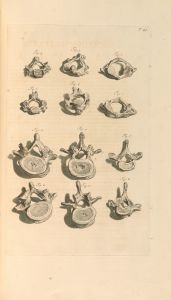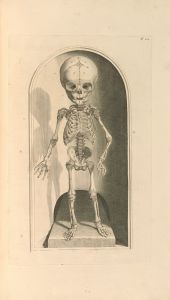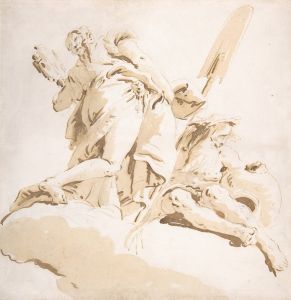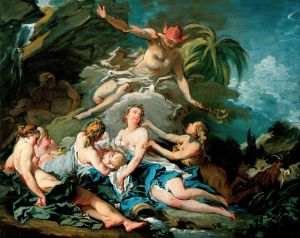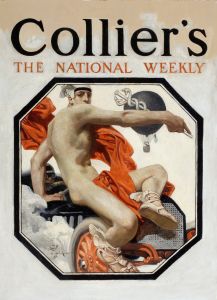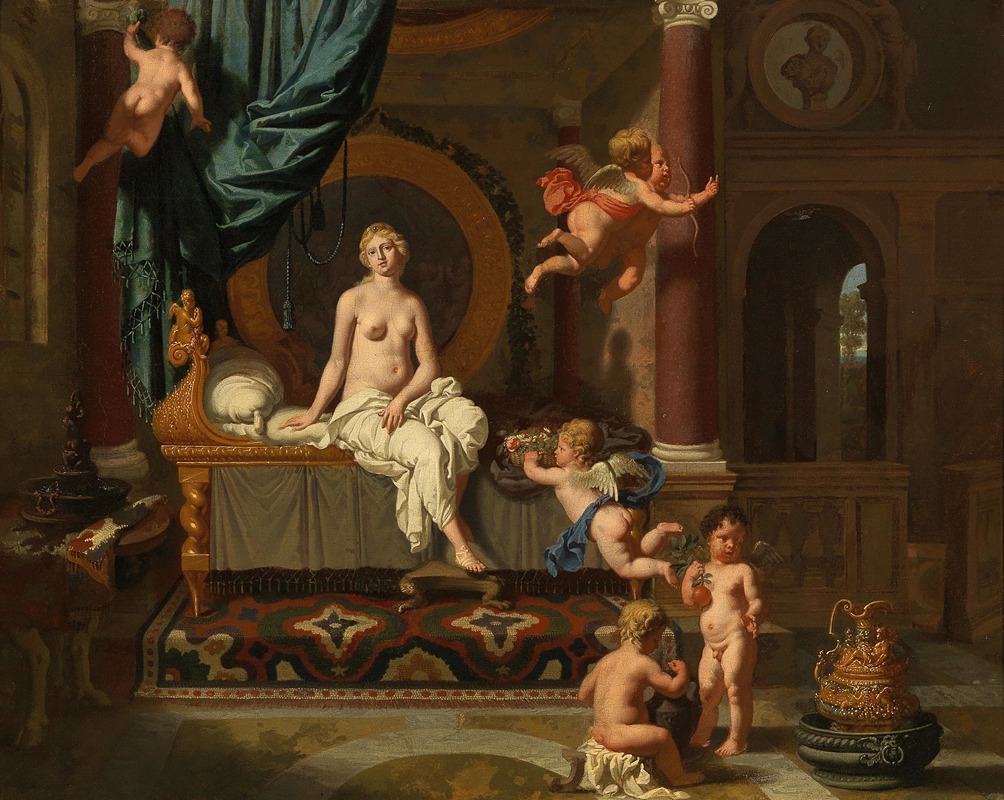
Herse Awaiting the Arrival of Mercury
A hand-painted replica of Gerard de Lairesse’s masterpiece Herse Awaiting the Arrival of Mercury, meticulously crafted by professional artists to capture the true essence of the original. Each piece is created with museum-quality canvas and rare mineral pigments, carefully painted by experienced artists with delicate brushstrokes and rich, layered colors to perfectly recreate the texture of the original artwork. Unlike machine-printed reproductions, this hand-painted version brings the painting to life, infused with the artist’s emotions and skill in every stroke. Whether for personal collection or home decoration, it instantly elevates the artistic atmosphere of any space.
Gerard de Lairesse was a prominent Dutch Golden Age painter and art theorist, known for his classical and mythological themes. One of his notable works is "Herse Awaiting the Arrival of Mercury," which exemplifies his mastery in depicting mythological subjects with a refined classical style.
The painting "Herse Awaiting the Arrival of Mercury" is based on a story from Ovid's "Metamorphoses," a narrative poem that has been a rich source of inspiration for artists throughout history. In the myth, Herse is one of the daughters of Cecrops, the mythical king of Athens. Mercury, the Roman equivalent of the Greek god Hermes, falls in love with Herse and seeks to win her affection. The scene captures the anticipation and tension of the moment before Mercury's arrival.
De Lairesse's interpretation of this mythological episode is characterized by his attention to detail and the graceful composition of figures. The painting likely features Herse in a contemplative pose, surrounded by an idealized landscape or interior setting that reflects the classical influences prevalent in de Lairesse's work. His use of light and shadow would have been employed to enhance the drama and emotion of the scene, a technique that was highly regarded in the Baroque period.
Gerard de Lairesse was influenced by the works of Nicolas Poussin and other classical painters, which is evident in his structured compositions and the serene, almost sculptural quality of his figures. His paintings often convey a sense of harmony and balance, aligning with the classical ideals of beauty and proportion. De Lairesse's background in art theory also informed his approach to painting, as he was known for his writings on art, including "The Great Book of Painting," which outlined his views on aesthetics and technique.
"Herse Awaiting the Arrival of Mercury" would have been created during a time when de Lairesse was at the height of his artistic career. Despite suffering from congenital syphilis, which eventually led to blindness, de Lairesse continued to produce works that were celebrated for their elegance and intellectual depth. His contributions to the art world extended beyond his paintings, as his theoretical writings influenced subsequent generations of artists.
The painting reflects the broader cultural and artistic trends of the Dutch Golden Age, a period marked by a flourishing of the arts and a fascination with classical antiquity. De Lairesse's work, including "Herse Awaiting the Arrival of Mercury," embodies the synthesis of artistic skill and scholarly knowledge that defined this era.
While specific details about the painting's current location or provenance may not be readily available, Gerard de Lairesse's legacy as a key figure in Dutch art history remains significant. His ability to blend mythological storytelling with classical aesthetics continues to be appreciated by art historians and enthusiasts alike.





